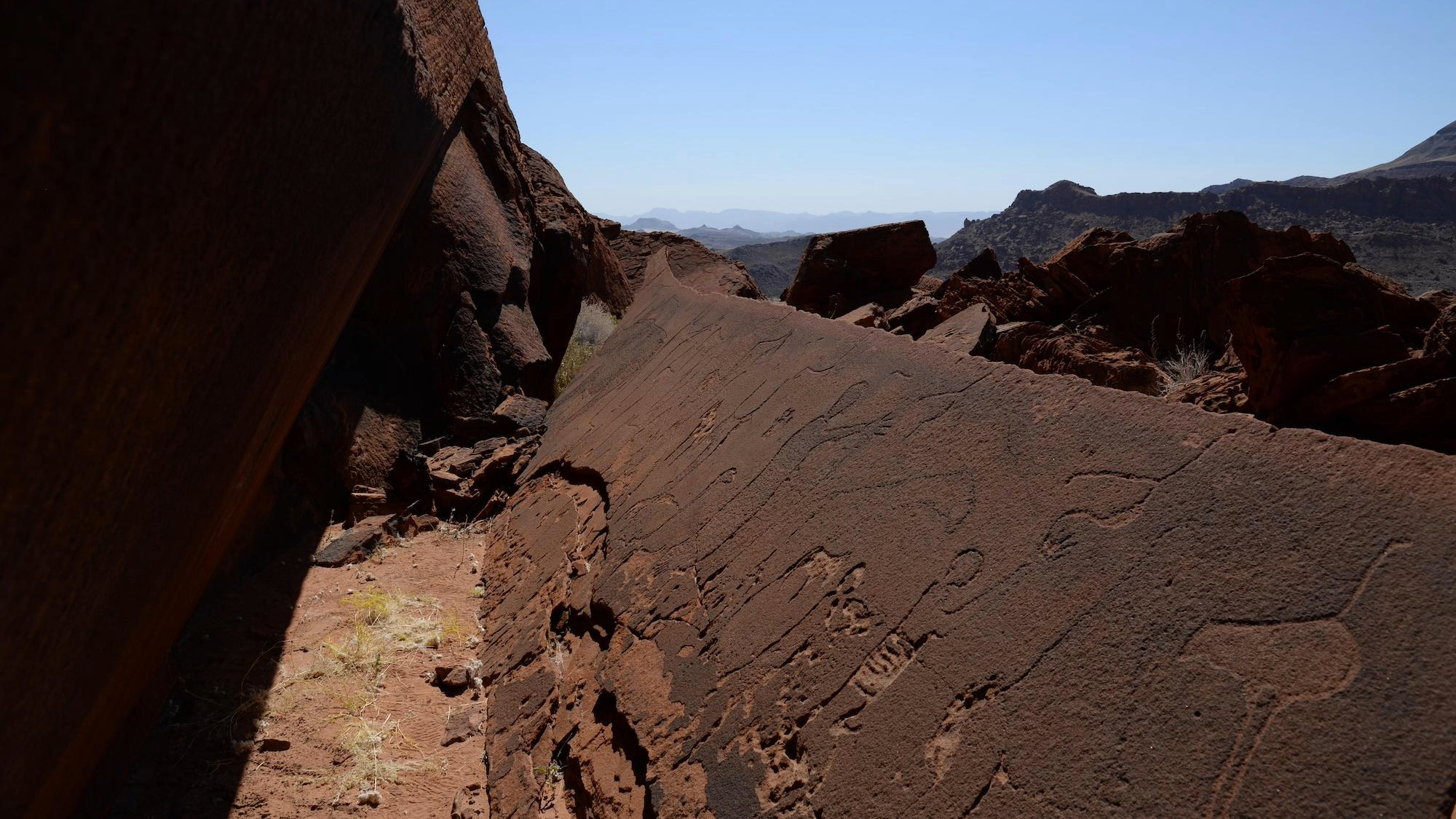

Cave paintings and rock art date back at least more than 57,000 years. They detail everything from an early form of writing to more recent dark stories of conflict. They also appear to have been an important animal tracking tool. In present-day Namibia, prehistoric peoples from the Late Stone Age put so much detail into their engravings of human and animal prints, that modern day Indigenous trackers were able to identify exactly which animal prints they were depicting, but also the animals general age and sex. The findings are detailed in a study published September 13 in the open-access journal PLoS ONE.
[Related: Cave drawings from 20,000 years ago may feature an early form of writing.]
While engravings of human footprints and animal tracks appear in various traditions of prehistoric rock art around the world, Namibia is especially rich in well-executed rock art made by hunter-gatherers in the Late Stone Age.

In the new study, a team of researchers from Germany and Namibia worked with Indigenous tracking experts from the Kalahari desert to analyze animal and human footprints found in rock art in the Doro! Nawas Mountains in central Western Namibia. The tracking experts were able to define the species, sex, age group, and even the exact leg of the animal or human print in more than 90 percent of the 513 engravings they examined. The rock art had significantly more diversity in the animals represented by the tracks than the ones of animals themselves. The prehistoric engravers also showed a clear preference for certain species of animals, were more likely to depict adult animals than juveniles, and male footprints outnumbered female footprints.
According to the team, the new findings reveal some patterns that likely arise from culturally determined preferences, but the meaning of these cultural preference patterns is still unknown. The team believes that consulting with present-day Indigenous experts may help determine more of the meaning behind the drawings. However, they point out that while Indigenous knowledge is critical for advancing archaeological research, the precise meaning and context of this rock art will likely remain elusive.
[Related: A discovery found in Germany’s ‘Unicorn Cave’ hints at Neanderthal art.]
“Namibia’s rock faces contain numerous Stone Age depictions of animals and humans, as well as human footprints and animal tracks. Until now, the latter have received little attention because researchers lacked the knowledge to interpret them,” the authors added.
